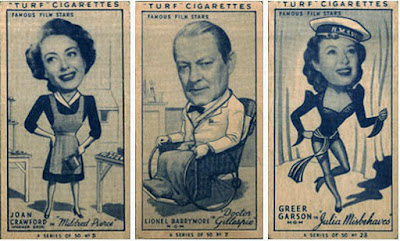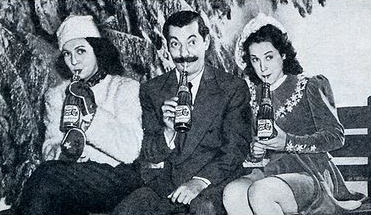The Courtship of Eddie's Father ( 1963 ) 18k
A widower's son tries to match his father up with their apartment neighbor who is a divorcee. Glenn Ford, Shirley Jones, Dina Merrill, Ron Howard, Roberta Sherwood. Metro-Goldwyn-Mayer. Directed by Vincent Minnelli.
This is one of the most underrated gems of the 1960s. Vincent Minnelli directs a really heart-warming comedy with scenes that make you laugh, smile, and cry all at the same moment. Ron Howard is excellent as little Eddie but it is Glenn Ford that steals the show with his portrayal of a distraught widower. Keep an eye out for country-western singer Roberta Sherwood in her role as the "live-out" housemaid studying Spanish for a trip to Brazil. The film also has a great New Year's Eve sequence.
___________________________________________________________
Now, Voyager ( 1942 ) 18k
An old maid takes an ocean voyage to South America based on a recommendation from her doctor, falls in love, and then returns to care for her aging mother and take control of her new life. Bette Davis, Paul Henreid, Gladys Cooper, Claude Rains. Warner Bros. Directed by Irving Rapper.
This is one of Bette Davis' most fondly-remembered films and it's no wonder, Now Voyager is entertaining woman's-fare and has held up remarkably well over the years. Davis transforms from an frumpy old maid to a glamorous socialite in a not-too-unbelievable way and Paul Henried is simply dashing as the man who helps her break from her shell. Bonita Granville has a nice spot as her taunting niece.
____________________________________________________________
The Parent Trap ( 1961 ) 18k
Two teenagers meet at summer camp and discover they are separated twins. They then scheme to bring their divorced parents back together. Hayley Mills, Maureen O'Hara, Brian Keith, Una Merkel. Walt Disney Studios. Directed by David Swift.
One of our all-time favorite Disney films....The Parent Trap was a huge success upon its release and launched Hayley Mills to stardom. You would think it is a little too long for children to sit through but the film is so entertaining that time flies by swiftly. But truly the comedic sequences are more amusing to adults than children. Maureen O'Hara looks stunning as the twins' mother, Maggie. She was 41 years old when she played the part.
___________________________________________________________
Man's Favorite Sport? ( 1964 ) 14k
A sporting goods salesman, believed to be a fishing expert, is exposed by two women during a famous fishing competition. Rock Hudson, Paula Prentiss, John McGiver, Maria Perschy. Universal Pictures. Directed by Howard Hawks.
Howard Hawks had a hit on his hand with Bringing Up Baby back in 1938. Man's Favorite Sport? combines many of the same elements used in B.U.B ( including a few of the same gags ) but in a refreshingly different way. Paula Prentiss made a career of playing ditzy gals and you won't find her crazier than she is here. What stands out in this film are the settings however : Lake Wakapugi, the lodge, the campsite, the Abercrombie & Fitch sporting goods section.....all colorful settings.
___________________________________________________________
The Lucy-Desi Comedy Hour - Lucy Hunts Uranium ( 1958 ) 14k
The Ricardos and the Mertzes take a trip out west and believe they have discovered uranium nuggets in the desert. Desi Arnaz, Lucille Ball, Vivian Vance, William Frawley, Fred MacMurray, June Haver. Desilu Productions. Directed by Jerry Thorpe.
After I Love Lucy ended, Desi Arnaz and Lucille Ball embarked upon an hour-long format of the show retitled "The Lucy-Desi Comedy Hour". The series took off from where I Love Lucy ended with the Ricardos and the Mertzes still living in Connecticut. In this episode they head out West and get caught up in "uranium" fever after discovering what they believe to be a uranium stash. This leads to the Mertzes and Ricardos racing to get to the claims office first in a scene reminiscent of It's a Mad, Mad, Mad, Mad World. Fred MacMurray and his real-life wife June Haver guest star.

























































